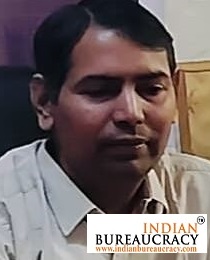A knowledge paper on Indian Railways, prepared jointly by PHD Chamber of Commerce and Industry and Institute of Coast Accountants of India (ICAI) reveals that Indian railways suffered so much from under investment between 1951 to 2014 that its track capacity addition could grow at CAGR of a meagre 0.7% whereas it witnessed a respective passenger and freight traffic growth by CAGR of 3.1% and 4.3%.
The paper which was released here by the Union Minister of State for Development of North Eastern Region (DoNER), Dr. Jitendra Singh in the presence of President and Vice President of the PHD Chamber Dr. Mahesh Gupta and Mr. Anil Khaitan among others at 3rd Global Rail Convention-2016 under aegis of PHD Chamber of Commerce and Industry also states that a consequence, capacity augmentation has suffered and so the quality of service delivery.
The paper titled Indian Railways – Transforming into an Engine of Growth further states, “the resources have been insufficient for improving customer satisfaction and introducing technological improvements. Investments in safety have also been insufficient and the biggest challenge facing Indian railways is its inability to meet the demands of its customers both freight and passenger”.
According to the paper, due to low track km addition over the years, the high density networks of the Indian Railways are facing acute capacity constraints, 40% of sections are running at 100% or above line capacity showcasing the high congestion in the system. More than 65% of high density network is running at over 100% utilization levels.
It points out that Indian railways is equipped with train engines that can travel at a speed of 160 km per hour, but due to old coach designs, the maximum speed they can travel at is 110 km per hour. In India the main line tracks built cannot even sustain the trains travelling at a speed of 110-130 km per hour. Due to this, the average speed of the trains is hampered. The time required to travel is increased because of weak infrastructure.
The paper further highlights that while passenger segment utilizes 65% of the resources, it contributes only 30% to the revenues, whereas freight contributed 70% by utilizing only 35% of resources. Cross subsidizing of passenger fares by artificially high freight fares has led to shift in favour of road transport, both in freight and short distance passenger traffic.
After releasing the knowledge paper, the Minister pointed out that between 2009-10 until 2013-14, an allocation of Rs.2,128.6 crore was made by the previous UPA government to establish railways linkages in the entire northern eastern region to mainstream it with the rest of India.
“Whereas, ever since the Modi government came to power in May 2014, it increased such an allocation for the same purpose by 150% at a level of over Rs.5,300 crore in the last two years, as a result the capacity building of railways has been intensifying in the north eastern region”, pointed Dr. Singh who is also MoS of Science and Technology, Earth Sciences, Department of Atomic Energy and Department of Sapce and Ministry of Personnel, Public Grievances and Pension, PMO.
The other participants in the convention consisted of Member Mechanical & Ex Officio Secretary to Government of India, Railway Board Mr. Hemant Kumar; IRSEE, Member-Electrical, Ministry of Railways, Mr. A K Kapoor; Ambassador, Embassy of the Czech Republic, Mr. Milan Hovorka; Chairman and Co-Chairman, Railways Committee, PHD Chamber, Mr. Sandeep Aggarwal and Mr. Manjit Narwan and its Secretary General and Director, Mr. Saurabh Sanyal and Mr. Yogesh Srivastav.




